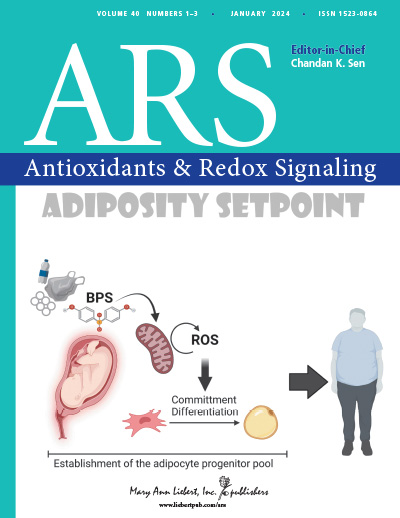求助PDF
{"title":"Nimodipine Blocks Histone-Induced Calcium Overload to Protect Neurons after Traumatic Brain Injury.","authors":"Wei Cao, Yunfeng Xu","doi":"10.1177/15230864251376030","DOIUrl":null,"url":null,"abstract":"<p><p><b><i>Aims:</i></b> To investigate if nimodipine alleviates traumatic brain injury (TBI)-induced neuronal apoptosis and neurological deficits by inhibiting extracellular histone-mediated Ca<sup>2+</sup> influx, mitochondrial damage, and Caspase pathway activation. <b><i>Results:</i></b> In vitro, nimodipine significantly reduced histone-induced Ca<sup>2+</sup> influx in cortical neurons, reversed by Ca<sup>2+</sup> activator A23187. It restored neuronal proliferation (↑3-(4,5-dimethylthiazol-2-yl)-2,5-diphenyltetrazolium bromide, ↑Ki67+ cells), reduced apoptosis (↓Annexin V/propidium iodide), improved mitochondrial function (↑ΔΨm/adenosine triphosphate, ↓reactive oxygen species/malondialdehyde, ↑Glutathione Peroxidase), and modulated apoptosis markers (↓Bax, ↑Bcl-2). These effects were blocked by A23187 or Caspase activator AD-2646, which increased Cleaved Caspase-3/9 and PARP1. Molecular docking confirmed nimodipine-histone binding. Transcriptomics revealed nimodipine reversed histone-induced dysregulation of Ca<sup>2+</sup> signaling, mitochondrial apoptosis, and oxidative stress pathways, with Caspase-3 as a key protein-protein interaction node. In vivo, nimodipine improved spatial memory (Morris maze), neurological function (↓modified neurological severity score), and motor coordination (↑rotarod) in TBI mice. It reduced brain lesions (2,3,5-triphenyltetrazolium chloride), neuronal loss (hematoxylin and eosin/Nissl), Ca<sup>2+</sup> accumulation, and proapoptotic protein expression and restored ΔΨm. Histone coadministration attenuated these benefits. <b><i>Innovation:</i></b> First demonstration that nimodipine directly targets extracellular histone-induced Ca<sup>2+</sup> influx-a key TBI pathology mechanism-preserving mitochondrial integrity and inhibiting the Caspase cascade, extending beyond its known vasodilatory effects. <b><i>Conclusion:</i></b> Nimodipine mitigates post-TBI neuronal apoptosis and dysfunction by blocking extracellular histone-driven Ca<sup>2+</sup> overload, preventing mitochondrial damage, and suppressing Caspase activation, significantly improving functional recovery. <i>Antioxid. Redox Signal.</i> 00, 000-000.</p>","PeriodicalId":8011,"journal":{"name":"Antioxidants & redox signaling","volume":" ","pages":""},"PeriodicalIF":6.1000,"publicationDate":"2025-09-17","publicationTypes":"Journal Article","fieldsOfStudy":null,"isOpenAccess":false,"openAccessPdf":"","citationCount":"0","resultStr":null,"platform":"Semanticscholar","paperid":null,"PeriodicalName":"Antioxidants & redox signaling","FirstCategoryId":"99","ListUrlMain":"https://doi.org/10.1177/15230864251376030","RegionNum":2,"RegionCategory":"生物学","ArticlePicture":[],"TitleCN":null,"AbstractTextCN":null,"PMCID":null,"EPubDate":"","PubModel":"","JCR":"Q1","JCRName":"BIOCHEMISTRY & MOLECULAR BIOLOGY","Score":null,"Total":0}
引用次数: 0
引用
批量引用
Abstract
Aims: 2+ influx, mitochondrial damage, and Caspase pathway activation. Results: 2+ influx in cortical neurons, reversed by Ca2+ activator A23187. It restored neuronal proliferation (↑3-(4,5-dimethylthiazol-2-yl)-2,5-diphenyltetrazolium bromide, ↑Ki67+ cells), reduced apoptosis (↓Annexin V/propidium iodide), improved mitochondrial function (↑ΔΨm/adenosine triphosphate, ↓reactive oxygen species/malondialdehyde, ↑Glutathione Peroxidase), and modulated apoptosis markers (↓Bax, ↑Bcl-2). These effects were blocked by A23187 or Caspase activator AD-2646, which increased Cleaved Caspase-3/9 and PARP1. Molecular docking confirmed nimodipine-histone binding. Transcriptomics revealed nimodipine reversed histone-induced dysregulation of Ca2+ signaling, mitochondrial apoptosis, and oxidative stress pathways, with Caspase-3 as a key protein-protein interaction node. In vivo, nimodipine improved spatial memory (Morris maze), neurological function (↓modified neurological severity score), and motor coordination (↑rotarod) in TBI mice. It reduced brain lesions (2,3,5-triphenyltetrazolium chloride), neuronal loss (hematoxylin and eosin/Nissl), Ca2+ accumulation, and proapoptotic protein expression and restored ΔΨm. Histone coadministration attenuated these benefits. Innovation: 2+ influx-a key TBI pathology mechanism-preserving mitochondrial integrity and inhibiting the Caspase cascade, extending beyond its known vasodilatory effects. Conclusion: 2+ overload, preventing mitochondrial damage, and suppressing Caspase activation, significantly improving functional recovery. Antioxid. Redox Signal. 00, 000-000.
尼莫地平阻断组蛋白诱导的钙超载对脑外伤后神经元的保护作用。
目的:研究尼莫地平是否通过抑制细胞外组蛋白介导的Ca2+内流、线粒体损伤和Caspase通路激活来缓解创伤性脑损伤(TBI)诱导的神经元凋亡和神经功能缺损。结果:在体外,尼莫地平显著减少组蛋白诱导的皮层神经元Ca2+内流,Ca2+激活剂A23187逆转。它恢复了神经元的增殖(↑3-(4,5-二甲基噻唑-2-基)-2,5-二苯基溴化四唑,↑Ki67+细胞),减少了细胞凋亡(↓Annexin V/碘化丙啶),改善了线粒体功能(↑ΔΨm/三磷酸腺苷,↓活性氧/丙二醛,↑谷胱甘肽过氧化物酶),并调节了细胞凋亡标志物(↓Bax,↑Bcl-2)。这些作用被A23187或Caspase激活剂AD-2646阻断,从而增加了裂解的Caspase-3/9和PARP1。分子对接证实尼莫地平与组蛋白结合。转录组学显示尼莫地平逆转组蛋白诱导的Ca2+信号失调、线粒体凋亡和氧化应激途径,其中Caspase-3是关键的蛋白相互作用节点。在体内,尼莫地平改善了TBI小鼠的空间记忆(Morris迷宫)、神经功能(↓修改神经严重程度评分)和运动协调(↑rotarod)。它减少了脑损伤(2,3,5-三苯四唑氯),神经元损失(苏木精和伊红/Nissl), Ca2+积累和促凋亡蛋白表达,并恢复ΔΨm。组蛋白联合用药减弱了这些益处。创新:首次证明尼莫地平直接靶向细胞外组蛋白诱导的Ca2+流-一个关键的TBI病理机制-保持线粒体完整性和抑制Caspase级联,扩展超出其已知的血管舒张作用。结论:尼莫地平通过阻断细胞外组蛋白驱动的Ca2+超载,防止线粒体损伤,抑制Caspase激活,显著改善脑外伤后神经元的凋亡和功能障碍,显著改善功能恢复。Antioxid。氧化还原信号:00000 - 00000。
本文章由计算机程序翻译,如有差异,请以英文原文为准。

 求助内容:
求助内容: 应助结果提醒方式:
应助结果提醒方式:


